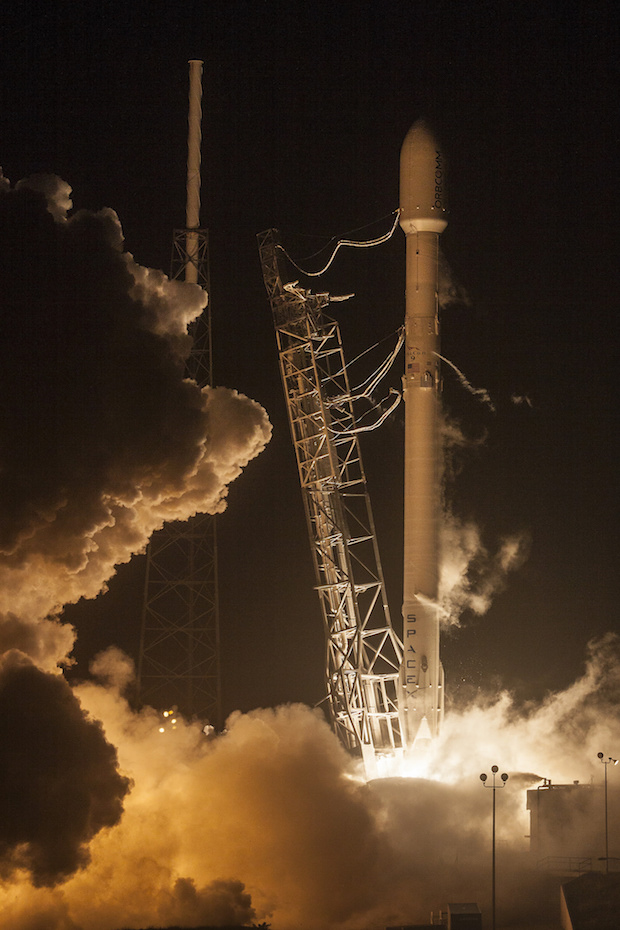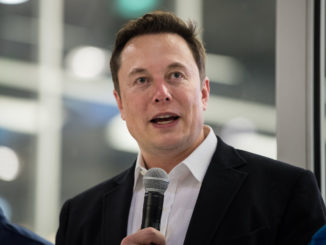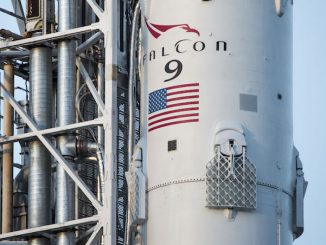
The U.S. Air Force on Monday certified the latest version of SpaceX’s Falcon 9 rocket, featuring higher-thrust engines, enlarged fuel tanks and a super-chilled propellant mixture, for launches of the military’s most valuable satellites.
The military’s formal sign-off on the upgraded Falcon 9 clears up any question that the modified launcher is eligible to compete for national security launch contracts.
Lt. Gen. Samuel Greaves, commander of the Air Force’s Space and Missile Systems Center in El Segundo, California, updated the certified baseline configuration of the Falcon 9 rocket Monday, the service said in a press release.
The Air Force certified the Falcon 9 v1.1 rocket for national security space missions in May 2015, but SpaceX flew the last rocket of that configuration Jan. 17 with the launch of the U.S.-European Jason 3 oceanography satellite from Vandenberg Air Force Base in California.
All future Falcon 9 launches will take off in the latest iteration of the booster, which debuted Dec. 21 with the launch of 11 Orbcomm message relay satellites from Cape Canaveral.
The upgraded Falcon 9 stands 229 feet (70 meters) tall, about five feet (1.5 meters) taller than the Falcon 9 v1.1.
The rocket’s nine Merlin 1D first stage engines collectively generate 1.5 million pounds of thrust, up from 1.3 million force-pounds produced by the engines on the Falcon 9 v1.1.
A single Merlin engine on the upper stage has a maximum 210,000 pounds of thrust in vacuum. The second stage also features a lengthened Merlin engine nozzle and extended propellant tanks. The interstage connecting the Falcon 9’s first and second stages is also changed to accommodate the new Merlin vacuum nozzle, which has a center pusher to aid stage separation
The propellant mixture feeding the Falcon 9’s engines is also adapted for higher performance.
The densified liquid oxygen on the upgraded Falcon 9 is chilled to minus 340 degrees Fahrenheit, colder than typical launch-grade liquid oxygen at minus 298 degrees. The RP-1 fuel is stored at 20 degrees Fahrenheit, down from the room temperature 70-degree level more commonly used in rocketry, according to Elon Musk, SpaceX’s chief executive.
The colder storage temperatures allow the launch team to load more propellant into the rocket, essentially packing the fluid’s molecules closer together to free up room for additional fuel.
The changes allow the Falcon 9 to haul 30 percent more mass into orbit, according to SpaceX.
The Air Force said Monday that Greaves approved the Falcon 9 upgrades under his authority to grant certification and updates based on SpaceX’s “demonstrated capability to design, produce, qualify and deliver their launch system.”
“The certification process provides a path for launch service providers to demonstrate the capability to design, produce, qualify, and deliver a new launch system and provide the mission assurance support required to deliver NSS (national security space) satellites to orbit,” Greaves said in a statement. “This gives the Air Force confidence that the national security satellites will safely achieve the intended orbits with full mission capability.”
The Air Force established the certification guidelines last year after a two-year process to make SpaceX eligible to win military launch contracts for communications, navigation and surveillance satellites. SpaceX sued the Air Force after it awarded a sole-source block buy launch deal to rival United Launch Alliance, the military’s only certified launch provider until last year.
SpaceX and the Air Force settled the suit in early 2015. The Falcon 9 won certification in May, and the Air Force late last year held its first national security launch competition in nearly a decade — since the merger of Lockheed Martin and Boeing’s rocket divisions to form ULA.
ULA declined to bid in the procurement to launch a future GPS navigation satellite in 2018, citing restrictions imposed by Congress limiting its ability to use Russian rocket engines for military missions with the Atlas 5 rocket.
ULA’s no-bid effectively handed the launch contract to SpaceX, but lawmakers lifted the Russian engine ban in December, giving the Atlas 5 footing in future head-to-head competitions with the Falcon 9.
Email the author.
Follow Stephen Clark on Twitter: @StephenClark1.



